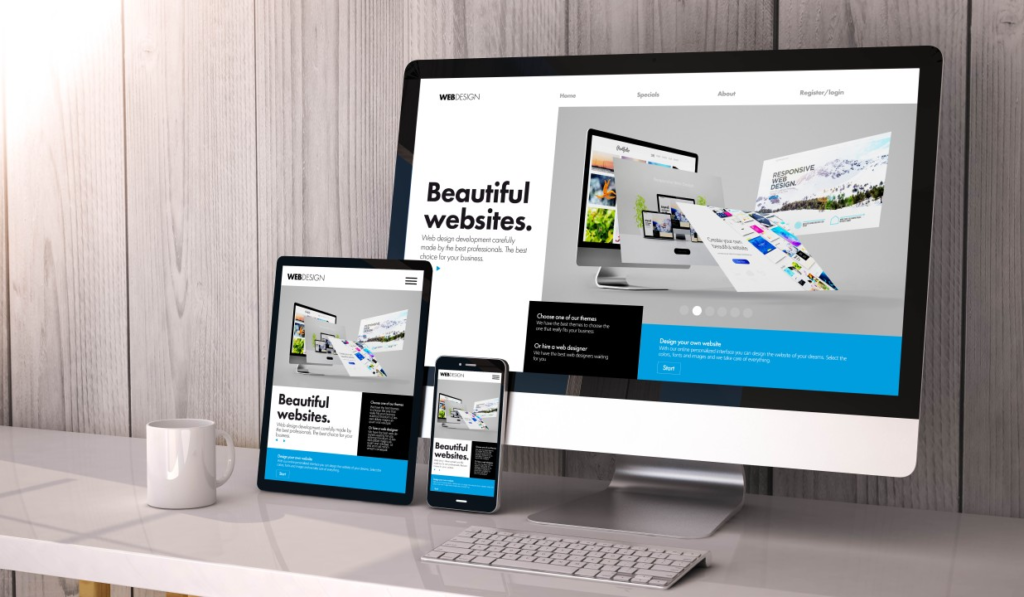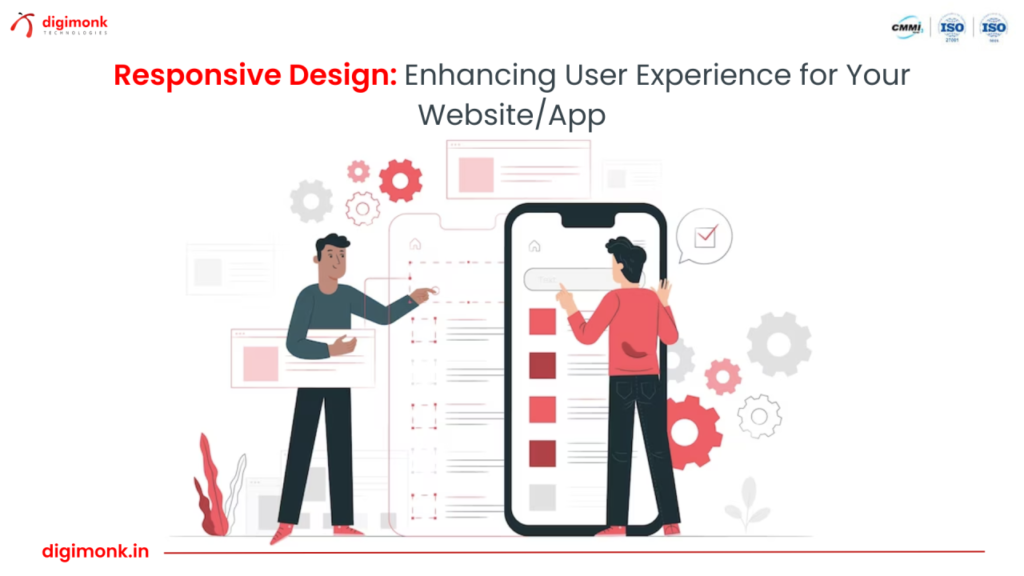Reactive Web Design: Creating Seamless User Experiences Across Devices
Reactive Web Design: Creating Seamless User Experiences Across Devices
Table of Contents
Introduction
In nowadays’s rapidly evolving virtual landscape, customers count on websites to deliver faultless reviews across all gadgets, from computer computers to smartphones and capsules. With the surge in cellular and wearable technology, ensuring that websites are responsive, bendy, and capable of adapting to consumer behavior has ended up an important aspect of modern-day web development. Reactive web design (RWD) is an incredibly new approach that specializes in creating seamless consumer reviews across diverse gadgets employing dynamically responding to users’ interactions in actual time. This is going past the traditional responsive layout by taking advantage of present-day frameworks and technology to enhance pace, capability, and consumer engagement.
This article will discover what reactive web design is, how it differs from responsive internet design, why it is important, the key advantages, and the way it enhances personal reports throughout devices.

What Is Reactive Web Design?
Reactive web layout is a sophisticated design methodology that is going beyond merely resizing elements to in shape diverse screen sizes. It responds dynamically to personal interactions, handing over real-time adjustments based on input, tool talents, and community situations. Unlike responsive internet design, which normally specializes in adapting layout and fashion across specific display screen resolutions, reactive web layout adapts now not simply visually, but also functionally, ensuring that the performance and experience align with every device’s specific needs.
Reactive internet layout often includes using current frameworks, inclusive of React.Js or Vue.Js, to decorate the interactivity and pace of websites. By leveraging technology inclusive of asynchronous records loading, reactive internet designs can minimize delays, handing over content in real-time as users navigate, click on, or perform movements at the website.
The Difference Between Reactive and Responsive Web Design
While each reactive and responsive web layout ambitions to optimize person studies across devices, they vary of their technique:
Responsive Web Design:
Basically presents with changing the format, pix, and different components to suit exceptional presentation screen sizes, ensuring that a site seems legitimate on both PC and cell phones.It is based on CSS media queries to come across the display length and practice the ideal styling.
Reactive Web Design:
Goes a step in addition with the aid of responding dynamically to person input, device capabilities, and conditions consisting of display screen resolution, tool orientation, or network power. It makes a specialty of delivering notably interactive and real-time remarks, using JavaScript frameworks to create fluid user stories.
In quick, even as responsive design modifications the look and experience of a website, reactive internet design adjustments each the layout and the conduct of the website based totally on actual-time statistics from customers and devices.

Why Reactive Web Design Matters in 2024
As the wide variety of gadgets that customers access the net with increases, traditional design methods warfare to hold up with the range of hardware, running structures, screen sizes, and community environments. This is in which reactive internet layout shines. It guarantees that regardless of how users get entry to a website, they will receive an experience tailored to their device’s precise abilities.
Here’s why reactive net design is vital in today’s virtual surroundings:
Increased Device Fragmentation:
With the proliferation of the latest devices, from foldable smartphones to smartwatches, the reactive design enables adapt seamlessly to the developing array of screen sizes and input techniques.
Improved User Experience (UX):
Reactive designs can cope with personal interactions extra efficaciously, offering real-time remarks and updates without requiring complete-page reloads. This effects in smoother, quicker, and more attractive stories.
Faster Load Times:
By the usage of superior techniques like asynchronous facts loading and partial web page updates, reactive web layout ensures faster load instances even on slower networks. This is particularly critical for customers gaining access to websites from regions with constrained net pace.
Enhanced Performance:
Reactive layout optimizes website’s overall performance with the aid of simplest loading the vital additives based totally on the consumer’s interaction, reducing the stress on both the server and the client-aspect resources.
Better Engagement:
Websites designed reactively can offer richer interactivity, which allows in keeping customers engaged for longer periods. Features consisting of instantaneous updates, real-time notifications, and interactive animations create extra immersive reviews.

Key Benefits of Reactive Web Design
The advantages of adopting reactive web layouts cross beyond aesthetics and person-friendliness. Let’s explore some of the biggest advantages:
Scalability:
As businesses develop, they want websites that can manage more visitors, records, and interactions. Reactive internet designs, with their modular frameworks, allow websites to scale easily and manage increased demand without sacrificing overall performance.
Reduced Bounce Rate:
A sluggish-loading, unresponsive internet site is one of the principal motives for users to leave a website. Reactive design improves load instances, especially on mobile gadgets and in low-bandwidth situations, which reduces soar fees.
Increased Conversion Rates:
By creating a fluid consumer experience wherein pages load instantly, users are much more likely to live at the website longer and eventually convert, whether this means making a buy, signing up for a publication, or filling out a shape.
Future-Proofing:
As new devices with various resolutions and skills enter the marketplace, websites designed reactively might be better prepared to house them. This way fewer redesigns and less preservation in the long run.
SEO Benefits:
Google and other search engines like Google and yahoo prioritize websites that offer a better consumer revel in, in particular on cell gadgets. Faster loading speeds, stepped-forward interactivity, and actual-time updates can improve an internet site’s seek engine rating, in the long run, main to extra visibility and site visitors.

Implementing Reactive Web Design
Building a reactive web design involves several key steps and technologies. Below are the essential practices and tools that developers and designers should focus on:
Use of Modern JavaScript Frameworks:
Devices like React.js, Vue.js, or Precise are key to responsive website composition. These systems permit engineers to make single-page applications (SPAs) that can refresh portions of the page progressively without reloading the whole page. This is vital for providing real-time responses to user interactions.
Component-Based Design:
Receptive website architecture uses a part-based approach, where the site is separated into more modest, reusable parts. This secluded methodology empowers better command over the client experience, execution, and usefulness of individual components, making it more straightforward to streamline different gadgets and connections.
Asynchronous Data Loading:
Instead of loading all the data when the page loads, reactive web design uses asynchronous calls to fetch data as needed. This significantly reduces load times, as the server only provides the necessary data when requested.
Progressive Web Applications (PWAs):
PWAs join the best of web and portable applications by offering disconnected admittance, message pop-ups, and quicker load times. Responsive website architecture standards adjust well to PWA improvement, making a smooth, application-like insight for clients.
Mobile-First Approach:
Planning for versatility first guarantees that the site is advanced for more modest gadgets prior to increasing to work area. This approach powers creators to focus on happy and usefulness, prompting a cleaner, more effective UI.
Real-Time User Feedback:
Incorporating real-time updates, such as live data feeds or instant form validation, enhances the overall user experience. These features are often powered by WebSockets or server-sent events, which keep the user engaged and improve the responsiveness of the website.

How Reactive Web Design Enhances User Experience
One of the number one dreams of reactive web design is to create a seamless, intuitive experience for the consumer. Here are some methods wherein it accomplishes this:
Dynamic Content Updates:
By delivering content material updates in real-time, a reactive internet layout ensures that customers get the maximum applicable statistics while not having to refresh or navigate to any other page. This is mainly useful for news websites, social media platforms, and e-commerce websites.
Personalized Experiences:
Reactive websites can tailor content based totally on user choices, previous interactions, and device abilities, supplying a greater customized enjoyment. For instance, a reactive website should display different product suggestions based totally at the user’s region or browsing history.
Smooth Navigation:
Instead of relying on web page transitions and reloading, reactive websites use clean, dynamic transitions between distinctive sections of a website. This creates a greater fluid revel in and decreases frustration for customers who could in any other case anticipate complete web page masses.
Accessibility Enhancements:
Reactive layouts also can contribute to making websites more accessible. Features like dynamic font resizing, voice instructions, or display screen reader-friendly content updates can be integrated to cater to customers with disabilities.

Conclusion
As the digital landscape keeps conforming, reactive web design is becoming vital for businesses that need to offer seamless and engaging personal experiences across all devices. With its dynamic reaction to person interactions, improved performance, and actual-time updates, reactive design ensures that web sites appear wonderful and feature optimally in any situation.
By adopting reactive net layout concepts, organizations can destiny-evidence their websites, increase engagement, and drive more conversions. The emphasis on user enjoyment, scalability, and speed guarantees that reactive web design is a worthy investment in the increasingly device-agnostic global of the net.








Write a Comment